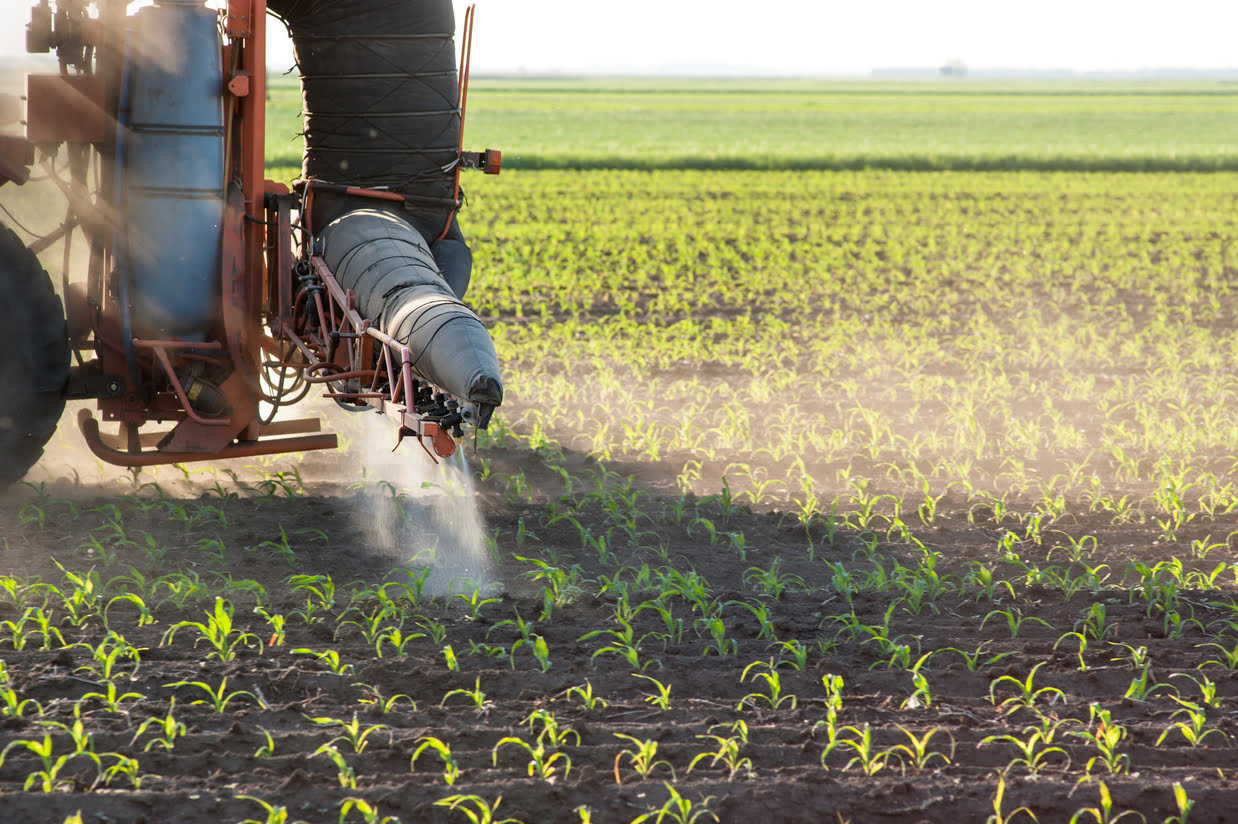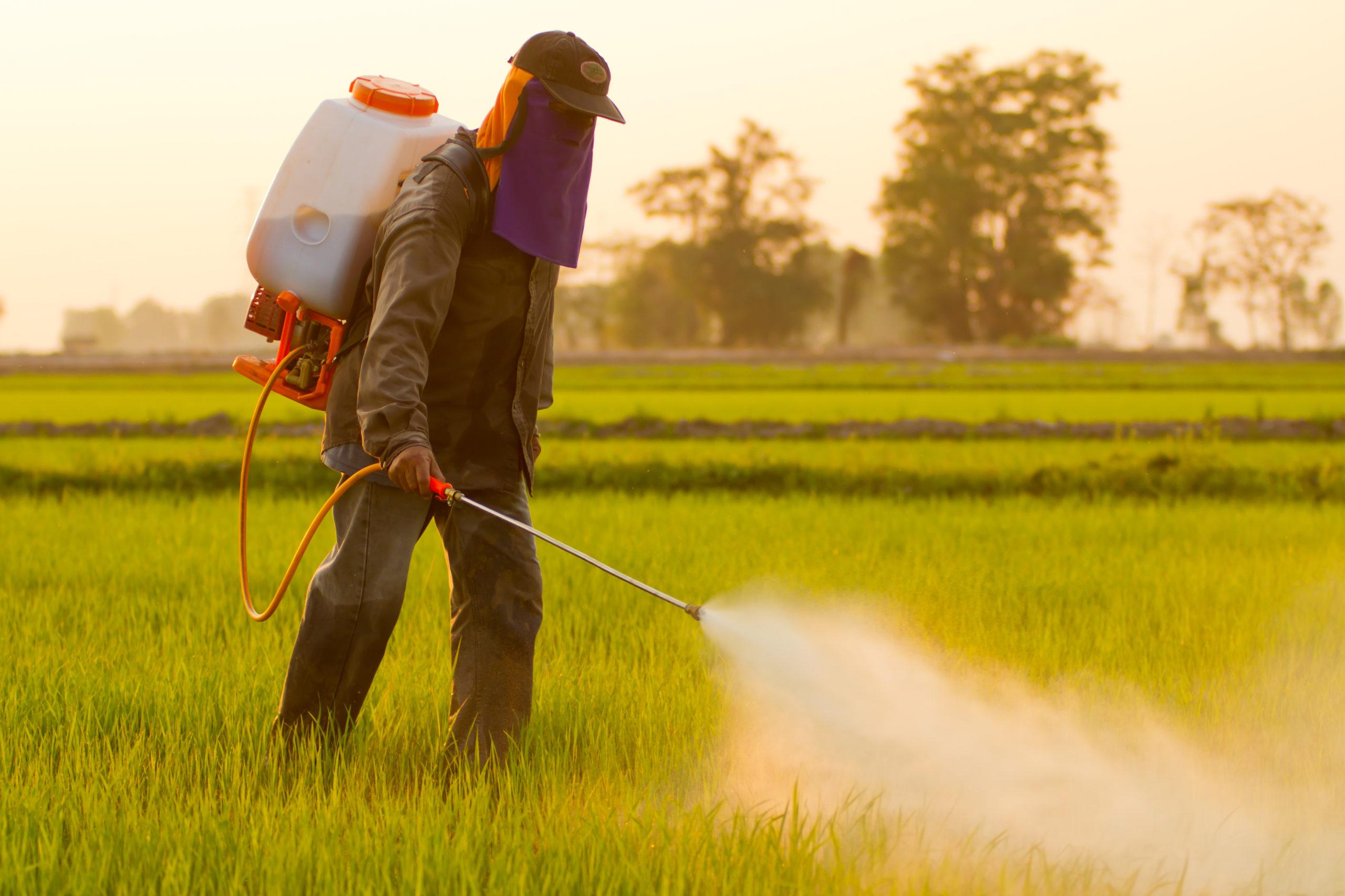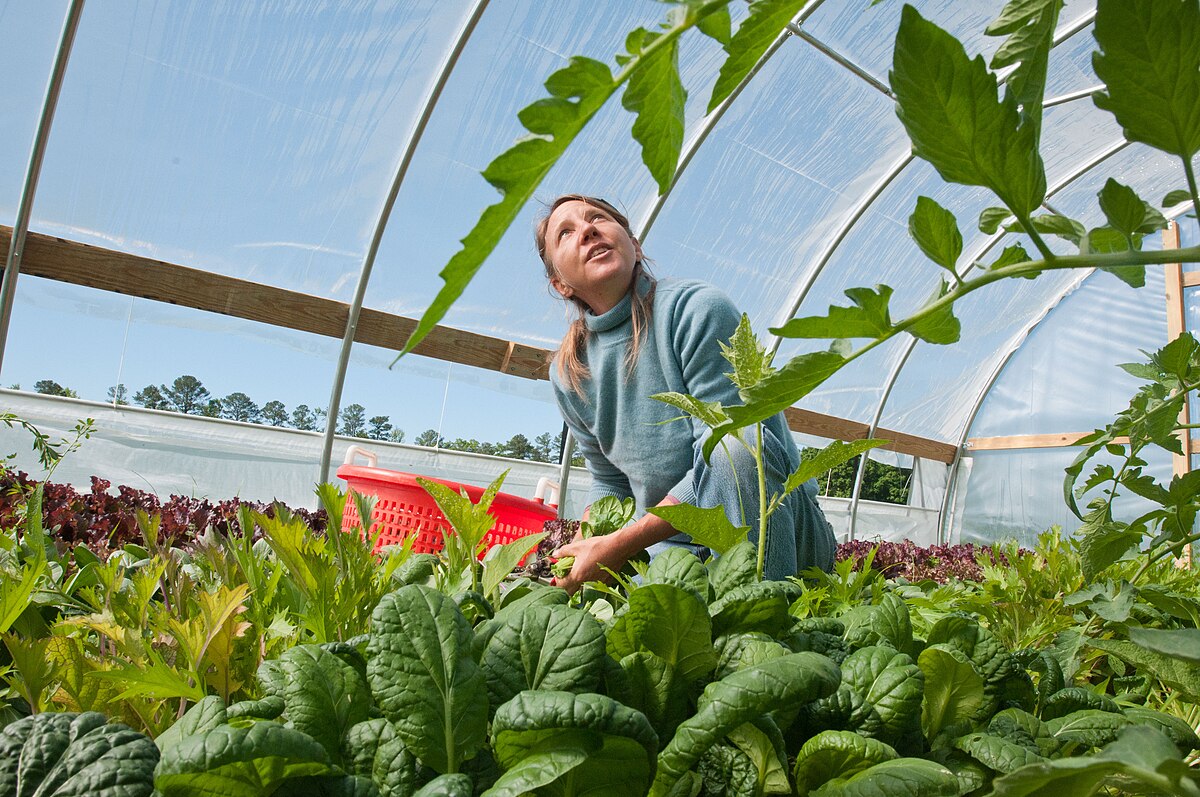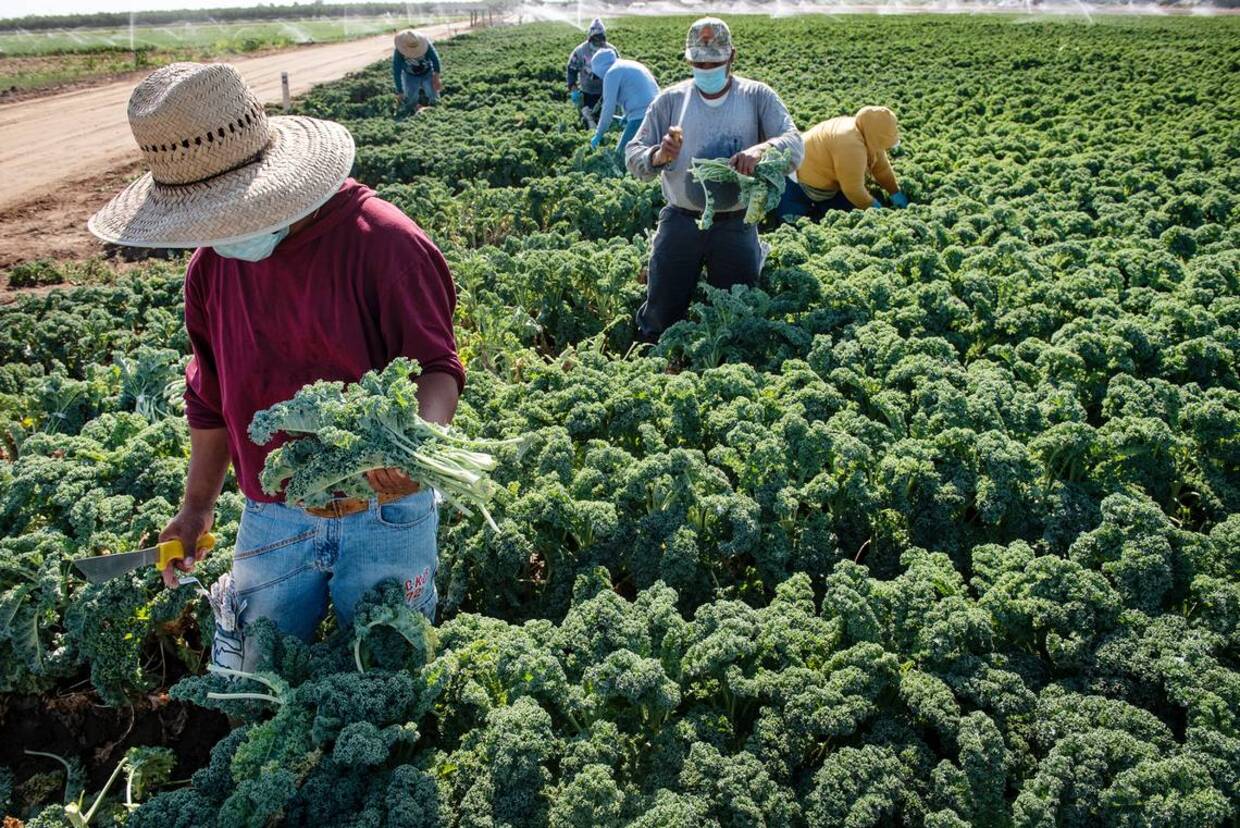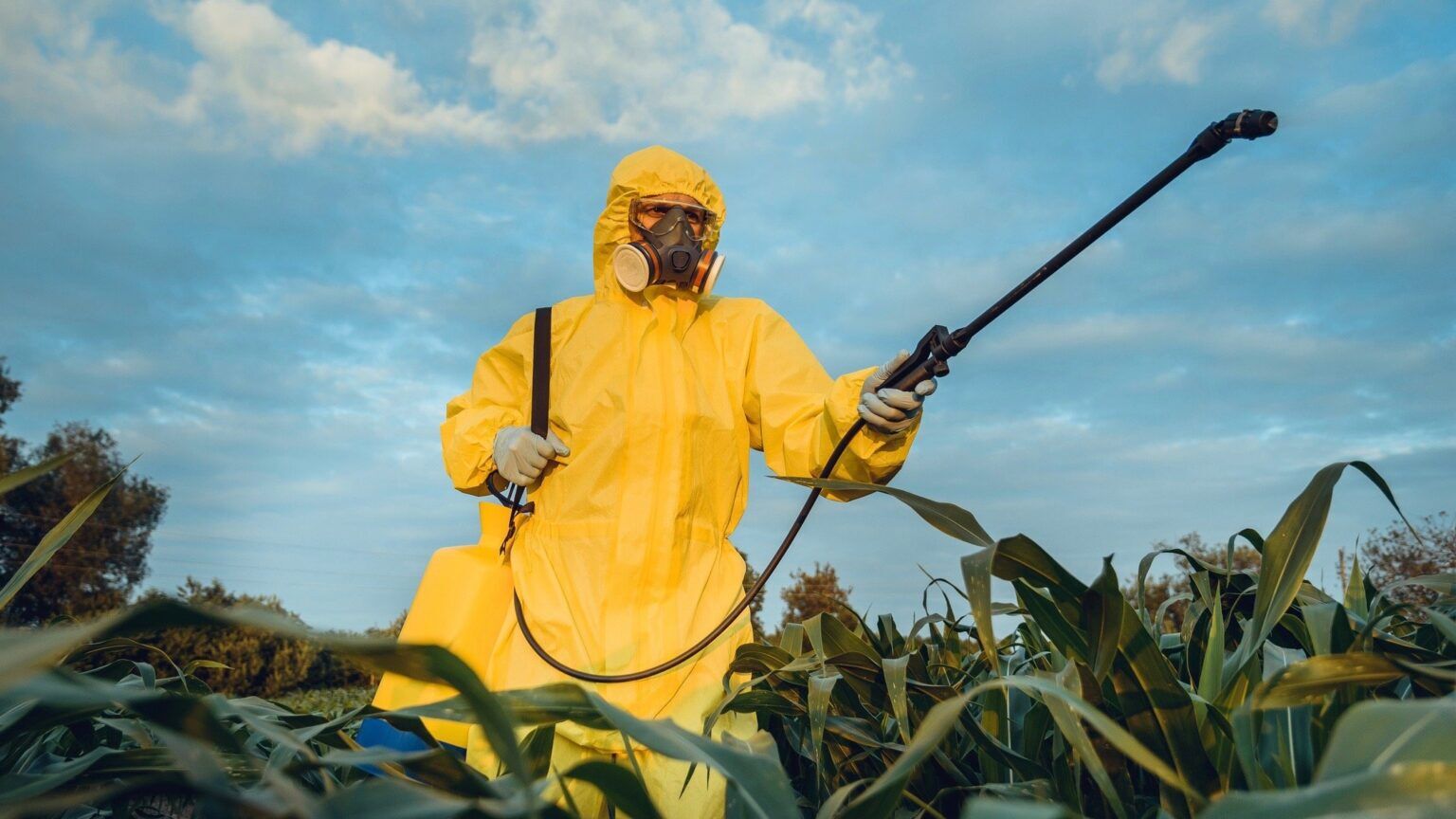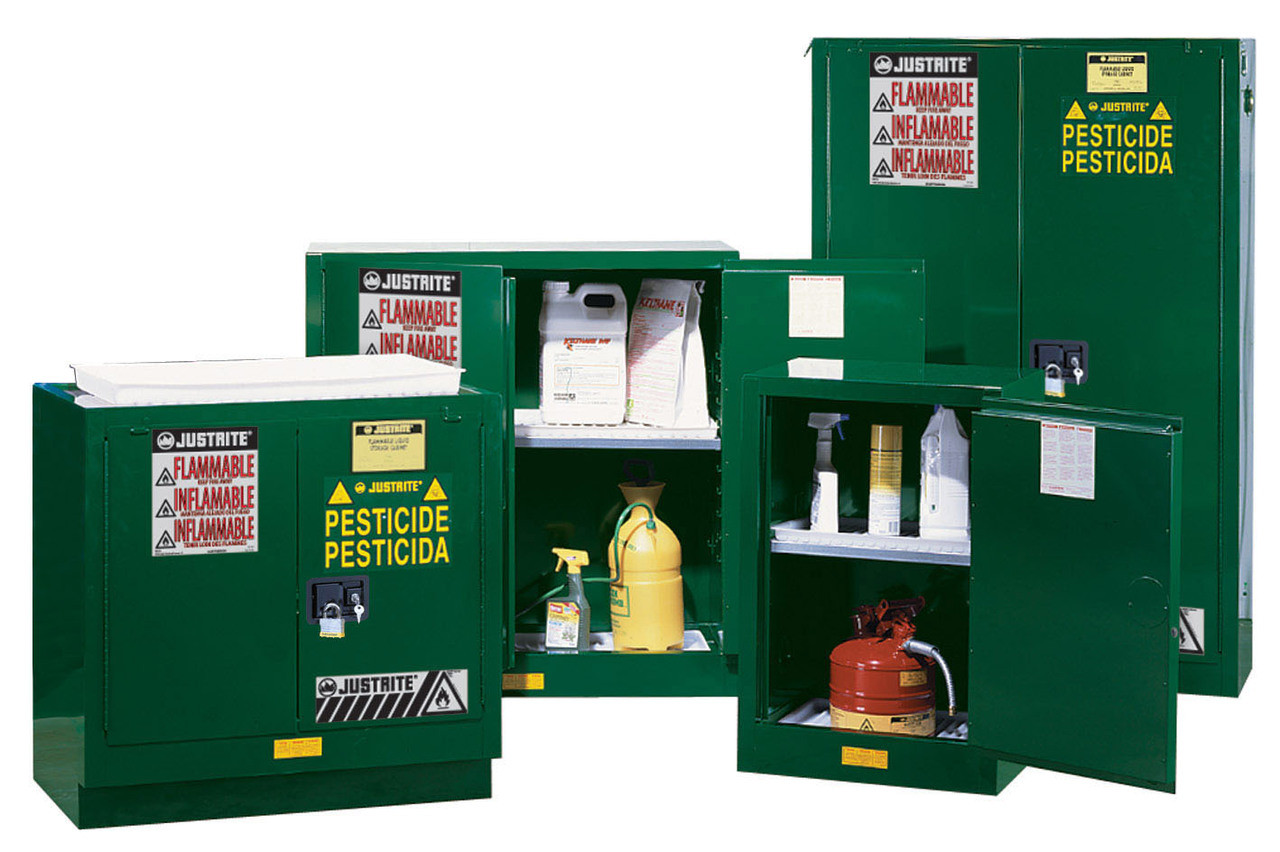Home>Gardening News and Trends>Latest News>What Insects Are Resistant To Pesticides
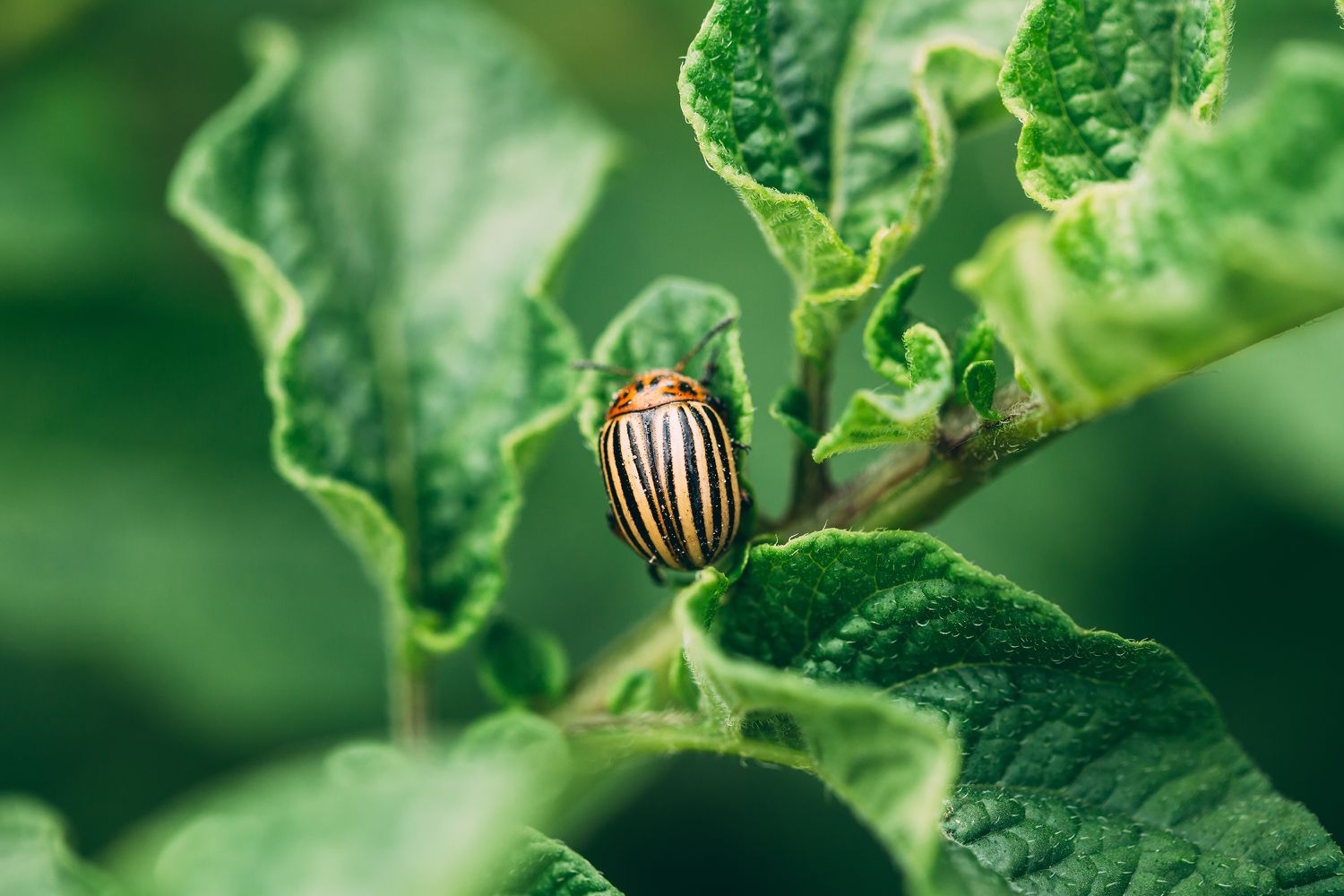

Latest News
What Insects Are Resistant To Pesticides
Published: December 8, 2023
Discover the latest news on insects that have developed resistance to pesticides. Stay informed and learn about the challenges faced in pest control.
(Many of the links in this article redirect to a specific reviewed product. Your purchase of these products through affiliate links helps to generate commission for Chicagolandgardening.com, at no extra cost. Learn more)
Table of Contents
- Introduction
- Common Pesticide Resistance in Insects
- Factors Contributing to Insect Pesticide Resistance
- Mechanisms of Insect Pesticide Resistance
- Case Studies of Insect Species Resistant to Pesticides
- Implications and Challenges of Pesticide Resistance in Insects
- Strategies to Manage Insect Pesticide Resistance
- Conclusion
Introduction
As the world grapples with the challenge of pest control, the issue of pesticide resistance in insects has become a pressing concern. Pesticides have long been used to eradicate destructive pests and protect crops, but their effectiveness is increasingly being undermined by the development of resistance in insect populations. Insects with a resistance to pesticides are able to survive exposure to these chemicals, rendering them ineffective in managing pest infestations.
While pesticide resistance is not a new phenomenon, the alarming increase in resistant insect populations has raised significant alarm among researchers and agricultural experts. This resistance not only poses a threat to crop production and food security but also poses risks to human health as insects have the potential to transmit diseases.
Understanding the factors contributing to insect resistance and exploring strategies to manage it are crucial in ensuring the sustained effectiveness of pesticides. This article discusses the common pesticide resistance in insects, the factors contributing to resistance, the mechanisms by which insects develop resistance, and case studies of insect species resistant to pesticides. Furthermore, it explores the implications and challenges posed by pesticide resistance and discusses strategies to effectively manage this growing issue.
Common Pesticide Resistance in Insects
Pesticide resistance is a widespread phenomenon among various insect species. Insects that have developed resistance to pesticides typically fall into two categories: specialist pests and generalist pests. Specialist pests are insects that primarily feed on a specific host plant or crop. They have evolved mechanisms to detoxify or tolerate the specific pesticides used to control them. Generalist pests, on the other hand, are capable of feeding on multiple host plants or crops. Their ability to adapt and develop resistance to a wide range of pesticides is a major concern for agricultural practices.
Insect pests resistant to pesticides can cause significant damage to crops and agricultural productivity. For instance, the cotton bollworm, one of the most destructive pests in cotton farming, has shown resistance to multiple classes of insecticides, including organochlorines, organophosphates, and pyrethroids. This resistance has resulted in reduced control of the pest, leading to yield losses and increased reliance on alternative pest management strategies.
Other common examples include the diamondback moth, a major pest of cruciferous crops, which has developed resistance to various insecticides, including Bacillus thuringiensis (Bt) toxins, which were specifically designed to target this pest. Additionally, mosquito populations have shown resistance to insecticides commonly used to control the spread of mosquito-borne diseases like malaria and dengue fever. This resistance poses challenges in effectively managing disease outbreaks and protecting public health.
Pesticide resistance in insects is not limited to agricultural settings. It is also a concern in urban environments, where insects like cockroaches, ants, and bedbugs have shown resistance to commonly used insecticides. This resistance complicates pest control efforts in residential and commercial settings, requiring the development of alternative strategies to manage these pests.
It is important to note that pesticide resistance is not static; it can evolve and spread rapidly. When a population of insects is exposed to a pesticide, a small percentage of individuals with natural genetic variations may survive. These resistant individuals can pass on their resistance traits to their offspring, leading to an increase in the resistant population over time. This phenomenon highlights the urgent need for proactive measures to combat pesticide resistance and protect against economic and public health risks.
Factors Contributing to Insect Pesticide Resistance
Insect pesticide resistance is a complex issue influenced by various factors. Understanding these factors is crucial for developing effective strategies to manage resistance. Here are some of the key factors contributing to insect pesticide resistance:
- Overreliance on a single pesticide: The excessive and repetitive use of a single pesticide or a narrow range of pesticides can promote resistance in insects. Continuous exposure to the same chemical puts selective pressure on insect populations, favoring the survival of individuals with inherent resistance or those capable of developing resistance through genetic mutations.
- Incorrect pesticide application: Inadequate application of pesticides, such as underdosing or not following recommended application procedures, can contribute to the development of resistance. Insufficient dosage may not kill all the targeted pests, allowing resistant individuals to survive and reproduce.
- Improper pest monitoring: Insufficient monitoring and identification of pest populations can lead to the delayed detection of resistance. Early identification of resistance allows for timely adjustments in pest management strategies, preventing the further spread of resistance.
- Pesticide persistence: Some pesticides have longer persistence in the environment, which can contribute to the development of resistance. Insects exposed to these persistent pesticides over an extended period have more opportunities to develop adaptive mechanisms, leading to resistance.
- Genetic variability: Insect populations naturally possess genetic variability. This genetic diversity can give rise to individuals with inherent resistance or the ability to develop resistance through mutations. When exposed to pesticides, these resistant individuals have a survival advantage, passing on their resistance traits to future generations.
- Horizontal gene transfer: Some insects can acquire resistance genes through horizontal gene transfer, which involves the transfer of genetic material between different species. This transfer can occur between bacteria and insects, potentially conferring resistance traits to susceptible insect populations.
It is important to recognize that these factors often occur in combination, exacerbating the development and spread of pesticide resistance in insect populations. To effectively combat resistance, integrated pest management (IPM) strategies that incorporate a combination of pest control methods, such as biological control, cultural practices, and judicious use of pesticides, are recommended. IPM approaches aim to minimize the reliance on pesticides and promote sustainable pest management practices.
Mechanisms of Insect Pesticide Resistance
There are several mechanisms through which insects develop resistance to pesticides. These mechanisms involve physiological, behavioral, and genetic adaptations that enable insects to survive exposure to toxic chemicals. Understanding these mechanisms is essential for devising effective strategies to manage pesticide resistance. Here are some of the primary mechanisms:
- Metabolic Detoxification: Insects can enhance their ability to metabolize and detoxify pesticides through the production of enzymes. These enzymes, such as cytochrome P450s, esterases, and glutathione S-transferases, break down and neutralize the toxic compounds before they can cause harm. The increased expression of these detoxification enzymes allows insects to survive higher pesticide doses.
- Target Site Mutation: Target site mutations involve changes in the genes responsible for the target proteins of pesticides. This can result in alterations to the target protein’s structure, reducing its affinity for the pesticide. As a result, the pesticide becomes less effective in disrupting the insect’s physiological processes. Target site mutations are commonly observed in pests targeted by insecticides such as pyrethroids and neonicotinoids.
- Reduced Penetration: Some insect species have developed physical and physiological adaptations that limit the penetration of pesticides into their bodies. These adaptations include thicker cuticles, reduced cuticular permeability, or altered pesticide transport mechanisms. As a result, the pesticides are unable to reach their target sites within the insect’s body, reducing their toxic effect.
- Increased Excretion: Insects can enhance their ability to eliminate pesticides from their bodies through increased excretion. This can involve the upregulation of transport proteins or alteration of metabolic pathways to facilitate the removal of the toxic compounds. By efficiently excreting the pesticide, insects can reduce its harmful effects and increase their resistance.
- Behavioral Adaptations: In addition to physiological adaptations, insects can also develop behavioral adaptations to evade or avoid exposure to pesticides. For example, some pests may modify their feeding or oviposition behavior to avoid treated areas or develop resistance to specific insecticides. These behavioral changes enable the insects to survive and reproduce despite the presence of pesticides.
It is important to note that the mechanisms of pesticide resistance can vary widely among different insect species and even within populations of the same species. Additionally, insects may employ multiple mechanisms simultaneously to enhance their resistance. This complexity underscores the need for a multifaceted approach to manage pesticide resistance, including the rotation or combination of different pesticide classes and the integration of non-chemical control measures.
Case Studies of Insect Species Resistant to Pesticides
Several insect species worldwide have developed resistance to pesticides, posing significant challenges for pest management. Here are some notable case studies highlighting the emergence of pesticide resistance:
- Colorado Potato Beetle: The Colorado potato beetle is a major pest of potato plants, known for its rapid development of resistance to insecticides. This beetle has demonstrated resistance to multiple classes of pesticides, including organophosphates, carbamates, and pyrethroids. The resistance is attributed to a combination of target site mutations, increased metabolism of the insecticides, and behavioral adaptations.
- Helicoverpa armigera: Also known as the cotton bollworm, Helicoverpa armigera is a significant pest of various crops worldwide. This moth is notorious for its ability to develop resistance to a wide range of insecticides, including pyrethroids, organophosphates, and Bt toxins. The resistance mechanisms include target site mutations, increased enzymatic detoxification, and altered behavior in response to insecticides.
- Anopheles mosquitoes: Anopheles mosquitoes are the primary vectors of malaria, a deadly disease affecting millions of people worldwide. These mosquitoes have shown resistance to various insecticides used in bed nets and indoor spraying programs, such as pyrethroids and DDT. The resistance is mainly attributed to target site mutations in the voltage-gated sodium channels, as well as increased detoxification capabilities.
- Cockroaches: Cockroaches are common household pests that have developed resistance to various insecticides used for their control. Some species, such as the German cockroach, have demonstrated resistance to multiple classes of insecticides, including organophosphates and pyrethroids. The resistance mechanisms include increased metabolic detoxification, reduced penetration of insecticides, and altered behavioral responses.
- Diamondback Moth: The diamondback moth is a major pest of cruciferous crops, known for its ability to rapidly develop resistance to insecticides. This moth has shown resistance to various compounds, including pyrethroids and Bt toxins. The resistance mechanisms involve target site mutations and enhanced metabolic detoxification through elevated enzyme activity.
These case studies illustrate the adaptability of insects and their ability to evolve resistance to diverse classes of insecticides. It highlights the importance of continuously monitoring pest populations, employing integrated pest management strategies, and developing sustainable and innovative approaches to overcome pesticide resistance.
Implications and Challenges of Pesticide Resistance in Insects
Pesticide resistance in insects carries significant implications for agriculture, public health, and the environment. Understanding these implications and challenges is crucial for devising effective strategies to address the issue. Here are some key implications and challenges associated with pesticide resistance in insects:
- Impact on Agriculture: Pesticide resistance in insect pests can lead to reduced efficacy of pest control measures, resulting in significant crop losses. This not only affects farmers’ livelihoods but also threatens global food security. The reliance on alternative pest management strategies may involve increased costs, labor, and potential ecological risks.
- Public Health Risks: Insects such as mosquitoes, known vectors of diseases like malaria, dengue, and Zika, developing resistance to insecticides poses a direct threat to public health. Inadequate control of disease-carrying insects can lead to increased transmission rates and outbreaks of infectious diseases.
- Environmental Impact: Pesticides, when used to control insect pests, can have unintended consequences on non-target organisms and ecosystems. The development of resistance may lead to the increased use of higher pesticide doses or alternative, potentially more harmful compounds, posing risks to beneficial insects, wildlife, and environmental sustainability.
- Need for Sustainable Pest Management: The emergence of pesticide resistance highlights the limitations of relying solely on chemical-based pest control methods. There is a growing need for sustainable pest management practices, such as integrated pest management (IPM), which encompass a combination of strategies including biological control, cultural practices, and careful use of pesticides.
- Challenges in Detection and Monitoring: Timely detection of pesticide resistance is essential for effective management. However, resistance may go undetected or be underestimated due to limited monitoring capacity, lack of standardized resistance monitoring protocols, and the potential for resistant populations to spread undetected across large geographical areas.
- Regulatory Challenges: Developing and implementing effective regulatory frameworks to address pesticide resistance is a complex task. Balancing the need for pest control with minimizing the development of resistance requires continuous evaluation and adaptation of regulations, as well as collaboration between government agencies, researchers, and the agricultural industry.
Addressing these implications and challenges requires a comprehensive approach that combines science, innovation, and collaboration. It involves the development and adoption of sustainable pest management practices, investment in research and technology, and increased awareness among stakeholders about the importance of responsible pesticide use.
Strategies to Manage Insect Pesticide Resistance
The management of insect pesticide resistance requires a multifaceted approach that focuses on sustainable pest control practices and minimizing the reliance on pesticides. Here are some key strategies to effectively manage insect pesticide resistance:
- Integrated Pest Management (IPM): Adopting IPM strategies that combine various pest control methods is crucial in managing pesticide resistance. IPM emphasizes the use of biological controls, cultural practices, and the judicious use of pesticides as a last resort. This approach helps to reduce the selection pressure on insects and minimize the development of resistance.
- Rotation and Alternation of Pesticides: Rotating between different classes or modes of action of pesticides can mitigate resistance development. By using different chemicals, the risk of insects developing resistance to a specific pesticide is reduced. Additionally, alternating between different insecticide treatments can disrupt the population dynamics of resistant insects.
- Monitoring and Early Detection: Implementing robust monitoring programs to detect and monitor resistance is critical. Regular monitoring of pest populations helps identify changes in susceptibility to pesticides, allowing for timely adjustments in management strategies. Early detection of resistance can prevent its spread and enable the use of appropriate control tactics.
- Targeted Application: Precision application techniques can help reduce pesticide use and minimize the selection pressure on insects. By targeting specific insect populations and hotspots, pesticide applications can be optimized, reducing the overall pesticide load and minimizing the chances of resistance development.
- Research and Development: Continued investment in research and development is essential for developing innovative and sustainable pest management solutions. This includes the exploration of new pest control methods, the development of novel insecticides with different modes of action, and the improvement of existing biopesticides and integrated pest management strategies.
- Educating and Training: Increasing awareness among farmers, agronomists, and stakeholders about the importance of responsible pesticide use and resistance management is crucial. Education and training programs can provide valuable knowledge on best practices for pest control, pesticide resistance awareness, and the benefits of adopting integrated pest management approaches.
- Collaboration and Knowledge Sharing: Collaboration between researchers, government agencies, industry stakeholders, and farmers is vital in addressing pesticide resistance. Sharing knowledge, best practices, and emerging research findings can help develop more effective resistance management strategies and foster innovation in pest control.
Implementing these strategies requires a holistic and proactive approach to insect pest management. By embracing sustainable practices and minimizing the reliance on pesticides, we can mitigate the development and spread of pesticide resistance, ensuring the long-term effectiveness of pest control measures.
Conclusion
Pesticide resistance in insects poses significant challenges for agriculture, public health, and the environment. The development of resistance by insect populations to commonly used pesticides threatens food security, increases public health risks from disease-carrying insects, and raises concerns about the ecological impact of widespread pesticide use. Understanding the factors and mechanisms that contribute to pesticide resistance is crucial for implementing effective strategies to manage this issue.
To address pesticide resistance, it is essential to adopt integrated pest management (IPM) strategies that combine multiple pest control methods, minimize the reliance on pesticides, and incorporate sustainable practices. These strategies should include rotation and alternation of pesticides, targeted application techniques, and the use of biological controls. Monitoring and early detection of resistance are key components of successful resistance management programs, allowing for timely adjustments in pest management strategies to prevent the further spread of resistance.
Additionally, research and development play a crucial role in finding innovative solutions for sustainable pest management. Investment in the development of new insecticides with different modes of action, improvement of existing biopesticides, and exploration of alternative pest control methods can help combat pesticide resistance effectively. Education and training programs that promote responsible pesticide use and raise awareness about resistance management are vital for empowering farmers and stakeholders to adopt sustainable pest management practices.
Addressing pesticide resistance requires collaboration and knowledge sharing between researchers, government agencies, industry stakeholders, and farmers. By fostering cooperation and sharing valuable insights and research findings, we can develop more effective resistance management strategies and ensure the long-term sustainability of pest control measures.
In conclusion, managing insect pesticide resistance is a complex and ongoing challenge that requires a comprehensive and proactive approach. By implementing integrated pest management strategies, promoting responsible pesticide use, and investing in research and innovation, we can work towards effectively managing pesticide resistance and safeguarding agricultural productivity, public health, and the environment.
